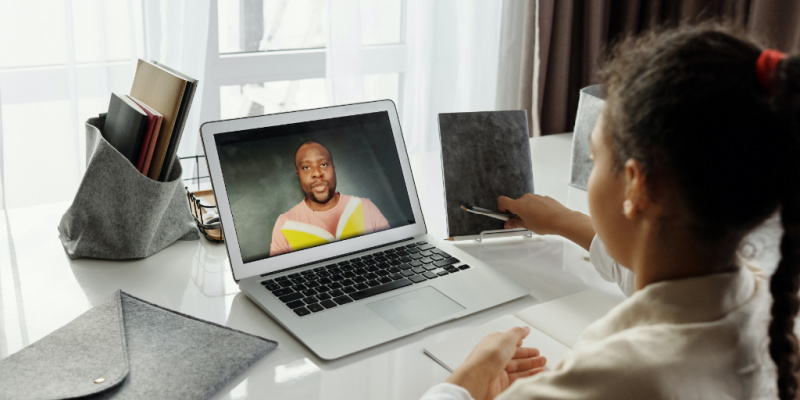By Shelby Rowe Moyer | Photo credit: Photograph by August de Richelieu courtesy of pexels.com
The latter half of the 2019-20 school year was challenging for everyone involved. But there was one major upside that eased the transition into virtual learning: students and teachers had already been together over half the school year in person.
But this fall, the school districts that are using a virtual learning model have educators, students and parents that haven’t met in person — only online.
To help alleviate some of the stress for parents and kids caused by the beginning of this school year, we spoke with two middle school teachers who offer some insight and advice about virtual learning.
Open Conversations
A key tenet of this school year will be communication between parents and teachers, says Mary O’Malley, a sixth-grade teacher with the Sun Prairie School District. When schools went virtual in the spring, teachers had several months to get to know their students. They had a pretty good understanding of what each student would need to be successful, she says, but this year, teachers are going in a bit blind.
“We want to know what’s working well and what isn’t,” O’Malley says. “We want to find out so we can best serve kids. When something wasn’t working out [in the spring], it was silence. I would hope with a fresh start, parents will communicate their needs.”
O’Malley says even knowing if a parent is working outside the home or is trying to work from home is helpful, because teachers can come up with adapted due dates for assignments or change communication tactics.
Lindsey Jones, a sixth-grade teacher with the Madison Metropolitan School District, echoes a desire for open communication. If class sessions are moving too quickly or students are being overwhelmed with schoolwork, Jones says she wants to know.
“If a child is struggling with, say, a math assignment and I know that they’re spending a lot of time at home completing that work, that’s good for me to know,” Jones says. “That’s not my intent, but it is my impact.”
Jones says she doesn’t want her students spending much time outside of the school day doing homework and she doesn’t want parents painstakingly trying to teach their child the material.
“The work that is provided should be just right — or … the teacher term is, ‘within their zone of proximal development,’” she says. “The work should not be over their heads. They should not be struggling alone. So that means asking teachers for differentiated instruction for their child — and that is a very fair request.”
Additional Structure and Routine
Early on this past spring, O’Malley says she realized how important it is to have face-to-face learning. “People don’t learn in isolation,” she says. “You learn with social interaction. You learn by talking and bouncing ideas off each other.”
This fall, districts are weaving in more live classes versus recorded instruction. O’Malley says she plans to have more breakout rooms with small groups within her class so students can continue to connect and reap the benefits of learning as a group.
O’Malley and Jones also say consistency is key. Jones says she and the other sixth grade teachers at her school are streamlining and simplifying the way they send learning material to their students. She noticed students were getting hung up on trying to find the appropriate document and then navigating their way through it to understand the lesson. If teachers across one grade level has similar processes and assignments, then students will be able to move through virtual learning more easily.
“A sixth grader in my class who lives in the same community or apartment with another sixth grader who isn’t in my class should be able — if given the opportunity — to have similar assignments and similar structure,” says Jones.
Final Thoughts for Parents
Jones says, at the end of the day, teaching should fall on the teachers. As a parent herself, she wants the burden of educating to come off parents’ shoulders. And she also understands that the school year is opening with a lot of social unrest, so she’s entering the academic year with that in mind — that students are dealing with a lot.
O’Malley says one of the best ways parents can support their child’s education is through reading and out-of-class experiences.
“Get Kindle books [or] get a subscription to a kid’s magazine, like National Geographic Kids,” O’Malley says. “Just having something for the kids to pick up and read is going to [incorporate] learning in any respect. If you’re out with your kids they’ll learn things. Discussions are learning. Educational shows are learning. I think parents need to trust their own natural world of learning, too. Learning can happen in lots of different ways.”




